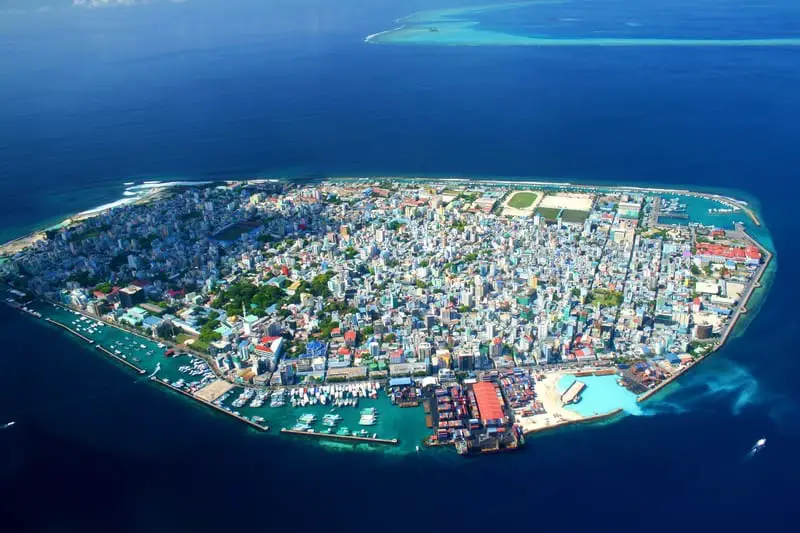If If you are planning for the next international trip but want to experience something different, we have extremely small countries, which are also the finest tourist destinations around.
As there are many large country destinations like Russia, Canada, Brazil, and Australia but there won’t be a thrill factor that a small tourist destination can have.
These types of countries are called microstates. Most of these nations have a region of less than 400 square kilometers, mostly present in Europe, the Caribbean, and the Pacific.
These small countries are also among the wealthiest, most distant, and most fascinating locations, with their laws and culture. Here are the top 10 smallest countries in the world:
10. Malta – 316 km²

- Location: Central Mediterranean Sea
- Poulation: Approximately 460,000
Malta, an island in Europe situated in the central Mediterranean Sea, is known for its small size and unique charm.
The capital of Malta is Valletta, and the country has a population of around 460,000 people, making it one of the most densely populated nations globally.
Due to its compact size, Malta’s cities and towns have developed close to one another.
Tourists flock to Malta from all over the world to enjoy its sunny climate, attractive coasts, rich culture, and vibrant nightlife.
With a total area of only 316 km², Malta ranks as the 10th smallest country in the world.
9. Maldives – 300 km²
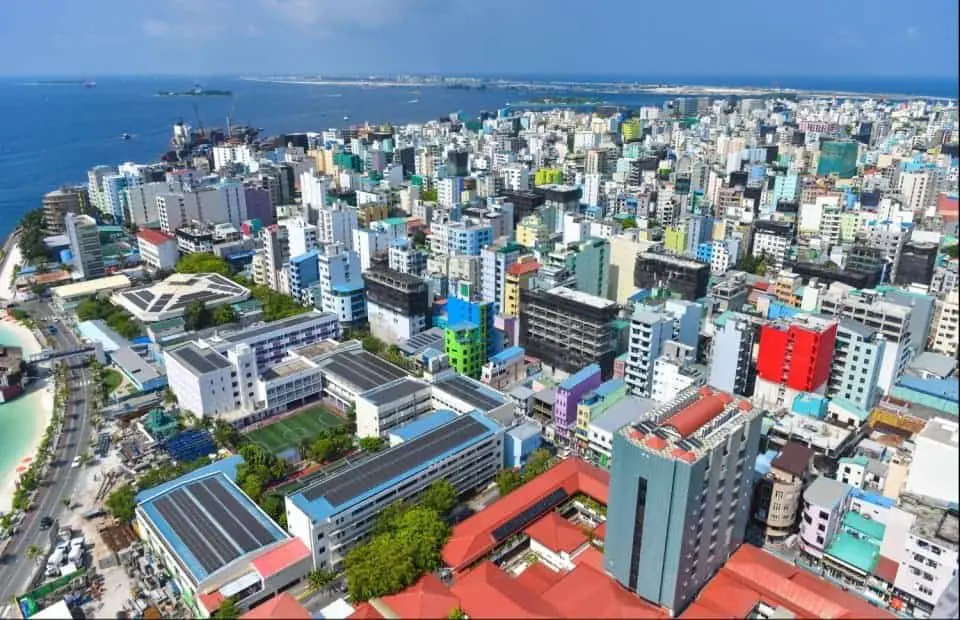
- Location: Indian Ocean
- Poulation: ~436,000
The Maldives, located in the Indian Ocean, is renowned for its pristine beaches and captivating beauty. It holds the title of Asia’s smallest country in terms of both area and population.
With over 1,192 coral reefs spanning over 90,000 square kilometers, the Maldives is one of the most geographically dispersed nations globally.
Today, the Maldives thrives on its flourishing tourism industry, thanks to its renowned white sand beaches and crystal blue waters.
Many of the islands in the Maldives are situated just 1.5 meters above sea level, making it the world’s lowest-lying nation.
Sadly, due to the effects of global warming, the Maldives faces the threat of rising sea levels, which could lead to the erosion of many of its islands.
8. Saint Kitts and Nevis – 261 km²

- Location: Caribbean sea
- Poulation: ~55,338
Saint Kitts and Nevis, two small Caribbean islands, were among the first islands colonized by Europeans.
Together, they cover a total area of 261 square kilometers, making Saint Kitts and Nevis the eighth-smallest country globally.
The economy of this nation relies on tourism, agriculture, and small-scale manufacturing.
Thanks to the abundant marine life surrounding the islands, they also offer excellent diving opportunities.
Presently, the country has a population of approximately 55,338. Saint Kitts and Nevis are known for their pristine coastlines, lush rainforests, and pleasant climate.
7. Marshall Islands – 181 km²

- Location: Oceania
- Poulation: ~53,100
The Marshall Islands consist of hundreds of islands and thousands of islets connected by 29 coral reefs. Out of these, only 24 islands are inhabited, home to a population of 68,000.
The people of the Marshall Islands speak Marshallese and English. The nation’s economy thrives on handicrafts, copra production, seafood processing, and tourism.
With its clear emerald-green waters, the Marshall Islands has 160 marine reefs and a diverse array of 800 fish species, making it a popular destination for scuba diving and snorkeling enthusiasts.
6. Liechtenstein – 160 km²
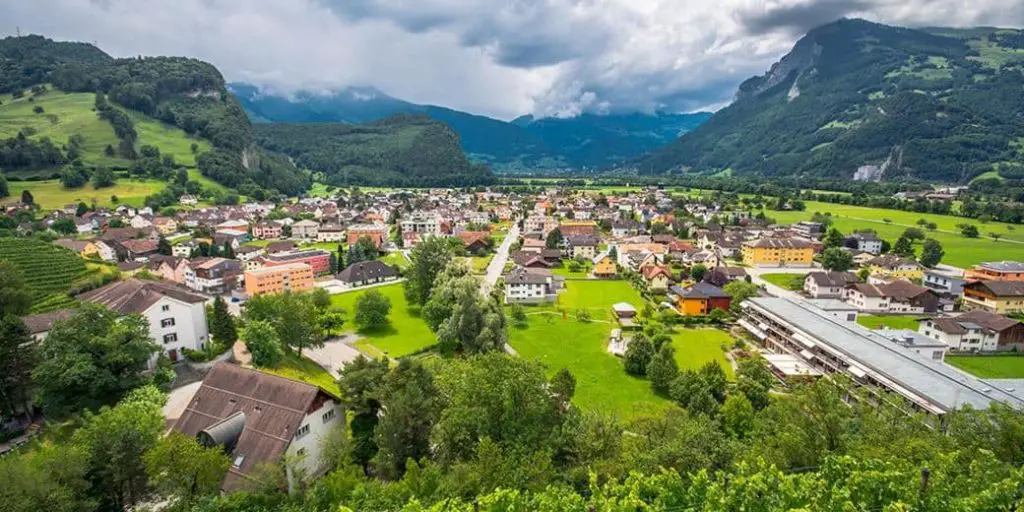
- Location: Europe
- Poulation: ~38,000
Liechtenstein is a German-speaking country and the only nation entirely situated in the Alps.
Located between Switzerland and Austria, this small country covers a land area of just 160 square kilometers and has a population of 37,132.
Liechtenstein is known as the richest country in the world based on its GDP per capita ($169,260).
Accessing the country is challenging as it lacks an airport within its borders. Visitors must travel via Zurich Airport in Switzerland to reach this Alpine nation, which is still governed by a prince.
With its compact size of 160 square kilometers, Liechtenstein ranks as the sixth-smallest country globally.
5. San Marino – 61 km²
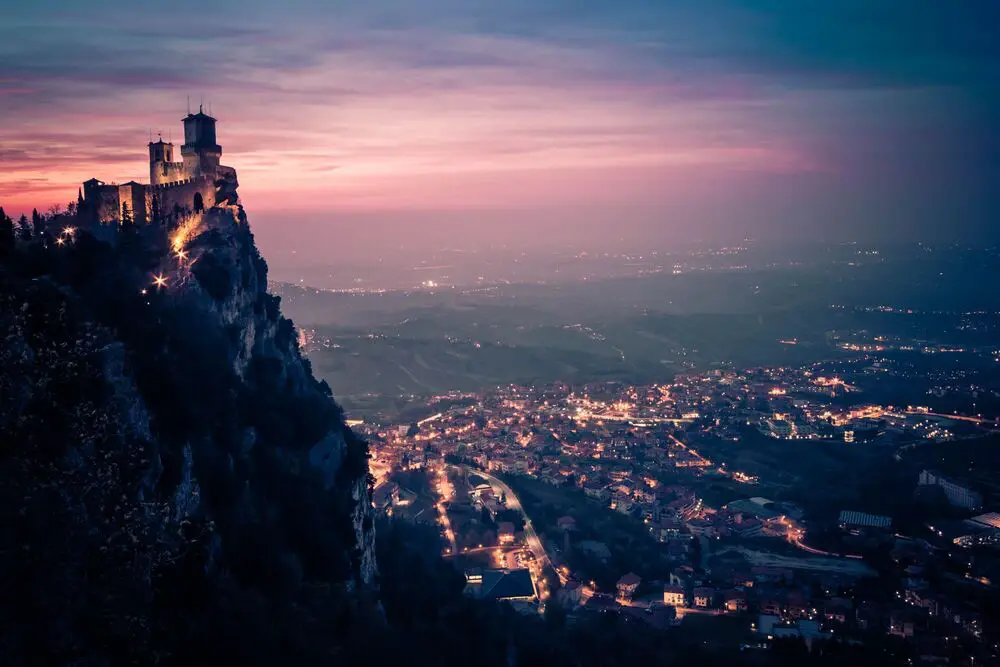
- Location: Europe
- Poulation: ~33,000
San Marino is the third smallest country in Europe, with a total area of 61 square kilometers.
This tiny nation is encircled completely by Italy. San Marino is also Europe’s earliest republic, established in A.D. 301. San Marino has only 30,000 occupants.
There are nine municipalities in the country, and the capital is San Marino City.
It is also one of the world’s wealthiest per GDP nations. Also famous for having more cars than its population in San Marino.
San Marino’s economy is focused primarily on tourism, banking, and textiles.
4. Tuvalu – 26 km²

- Location: Ocenia
- Poulation: ~11,400
Tuvalu, a tiny country located in the Western Pacific, comprises five atolls and four islands.
With a population of only 11,400, Tuvalu faces the challenge of its low-lying islands, as its highest point stands at just 4.5 meters above average sea level.
This geographical vulnerability makes Tuvalu susceptible to the impacts of rising sea levels.
The country has only one airport, located in the atoll of Funafuti.
Due to its remote location, Tuvalu’s tourism industry is relatively limited, with fewer than 3,000 tourists visiting the country in 2019.
3. Nauru – 21 km²
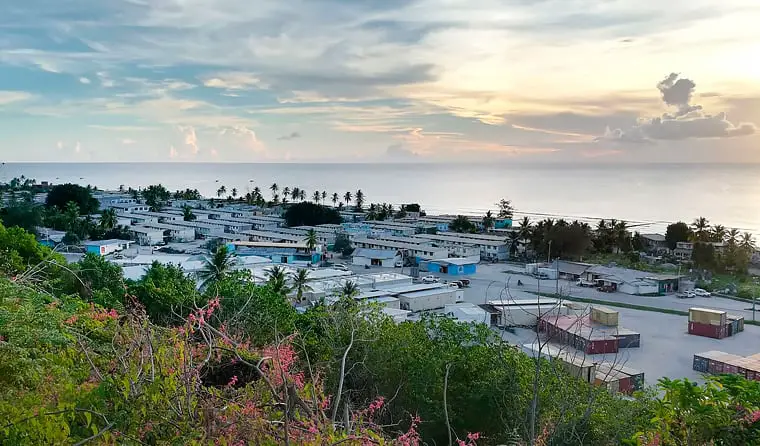
- Location: Pacific Ocean
- Poulation: ~13,650
Nauru is the world’s smallest island country with an area of 21 km².
Which also makes it the world’s second least populated country, with only 13,650 residents.
It’s a big island with plenty of phosphate mineral resources.
From 1960 to 1970, the extraction of this valuable resource became the country’s primary source of revenue.
Nauru’s GDP wise, as a country became rich overnight but, unfortunately, as soon as the phosphate started depleting, the country began its decline.
It could still become economically stable by promoting tourism.
In addition to its white sandy shores, this island nation is surrounded by tropical colorful coral reefs.
But Nauru’s tourism is limited as the main industries in Nauru are phosphate mining, coconut items, and overseas banking.
2. Monaco – 2 km²

- Location: Europe
- Poulation: ~39,000
Located on the French Riviera, Monaco is famous for being the playground of the world’s wealthiest individuals, including millionaires and billionaires.
With a total area of only 2 square kilometers, Monaco is the second-smallest nation globally.
Monaco is synonymous with luxury, known for its thriving gambling industry and high-end goods and services sector.
Another major attraction in Monaco is the Monaco Grand Prix, one of the most prestigious races in the world.
Due to its geographical location, Monaco is predominantly French-speaking and shares borders with France on three sides, with the Mediterranean Sea on the other.
1. Vatican City – 0.44 km²
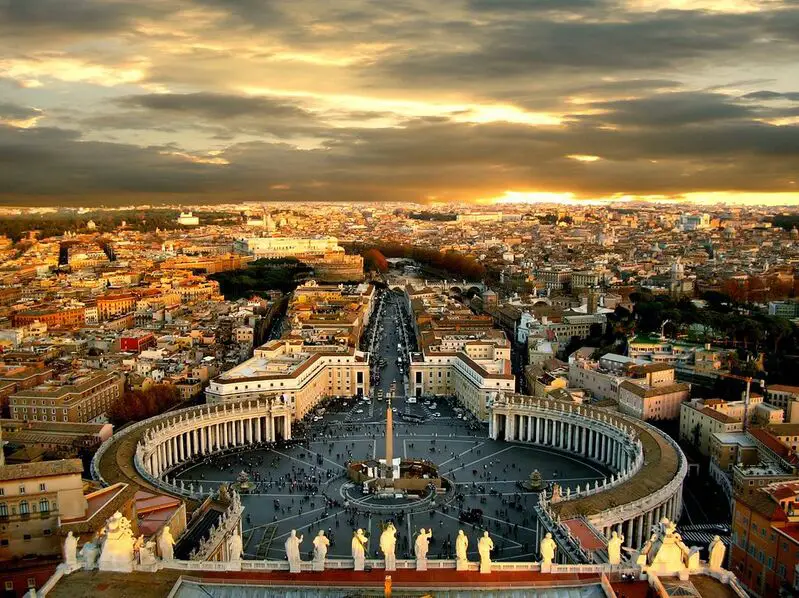
- Location: Europe
- Poulation: ~1,000
One of the most recognizable people on the planet is the most renowned citizen of the Vatican, The Pope.
Vatican City, with an area of only 0.44 square kilometers, holds the distinction of being the smallest country in the world.
The population of Vatican City does not even build up the half-thousand limit.
Its revenue primarily comes from donations contributed by over one billion members of the Roman Catholic Church worldwide.
Additionally, Vatican City’s economy relies on the sale of museum stamps, tourist memorabilia, and entry fees.
These ten countries stand out for their remarkably small territories, each offering unique cultural, historical, or geographical characteristics. Despite their size, they each possess distinct identities and contribute to the rich diversity of our world.
